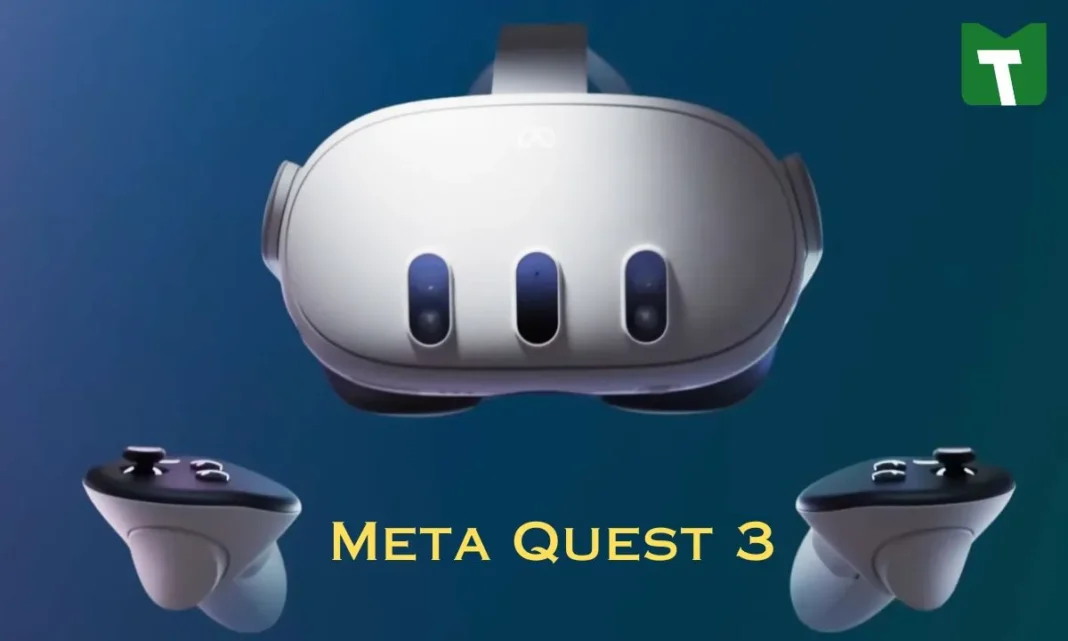
The Meta Quest 3 has been officially revealed by Meta, Facebook's parent company, and will be available this fall for $499.
The new headset will have a 40% smaller overall design than its predecessor, as well as a new Snapdragon CPU to power its virtual reality and mixed reality experiences.
It does imply that you'll have to pay $200 more than the Meta Quest 2 for the privilege, so try the latter if you want to save some money while still exploring VR.
Read on for everything we know so far about Meta Quest 3.The Meta Quest 3 will cost $499, which is $100 more than the Quest 2's $399/£399 MSRP. The Quest 2 originally cost $299/£299, however Meta has recently raised the price. Hopefully, that won't happen again with Quest 3.
There is no official pricing for the United Kingdom or Australia, but expect it to be around £499 in the United Kingdom and between AU$629 and $700 in Australia. Interestingly, the 256GB Quest 2 has been reduced in price in Australia, from AU$789 to AU$719, so expect competitive pricing in the land down under.
Overall, it appears that Meta is raising the price of the Quest headset. However, this is most likely owing to a rise in part prices and the usage of more complex VR technology. It's also worth noting that the Quest 3 costs less than the $549 PSVR 2 and doesn't require a $500 gaming system to run.
As a result of the arrival of the Quest 3, Meta has announced that the price of the Quest 2 will be reduced to $299 for the 128GB model and $349 for the 256GB variant.
Meta CEO Mark Zuckerberg announced that the Meta Quest 3 will be released this fall, and that more information will be unveiled at the Meta Connect conference on September 27.
Based on this, we can assume that the Quest 3 will be released on September 27, or that pre-orders will begin on September 27 with a release date soon after. The Meta Quest 2 was launched on October 13, 2020, therefore a Quest 3 release in October looks possible.
The Meta Quest 3 announcement by Zuckerberg did not go into great depth about the headset's specifications, but there are some key conclusions from his Instagram-based presentation.
To begin, the Quest 3 will have 128GB of storage as standard, with "an additional storage option for those who want more space." It's unclear what it will be or how much it will cost, but we wouldn't be surprised to see a 256GB or 512GB option.
The addition of a next-generation Qualcomm Snapdragon chip is the second important official upgrade. It's unclear what that chip will be, but we can anticipate it to be tailored to the Quest 3. However, it has been confirmed that the Quest 3 will have twice the graphical performance, so expect higher-quality images in VR games and experiences.
There are no resolution or refresh rate specifications available, but we can estimate a resolution of 4,128 by 2,208 pixels or 2,064 by 2,208 pixels per eye. This would not only take advantage of the increased GPU power, but would also improve on the Quest 2's 1,920 by 1,832 per eye resolution. The refresh rate will almost probably begin at 120Hz out of the box, but we wouldn't be surprised if the Quest 3 was pushed to 144Hz in select VR games or through post-launch updates.
High-fidelity color Passthrough is a useful enhancement that allows you to see the real world around you in full color through the headset rather than in monochrome as with the PSVR 2. According to Meta, the Quest 3's usage of machine learning and spatial awareness could allow wearers to engage with both the virtual and real worlds at the same time, "creating limitless possibilities to explore."
Expect no eye-tracking technology, which means no PSVR 2 foveated rendering for smartly drawing what you're concentrating on while lowering the fidelity of what's in your peripheral vision to reduce GPU strain.
Interested in Meta Quest 2 then buy it-Meta Quest 3 has been completely updated from the "inside out" according to Meta. While the headset retains the same overall appearance as the Quest 2, it is now 40% thinner, features a bold trio of pill-shaped cameras/sensors on the front of the headset, and appears to use a more flexible material for the head strap.
There appears to be an extra button on the bottom of the headset, most likely a wheel for adjusting IPD, which should be a huge improvement over the Quest 2. The face shield appears to have been modified as well, and it may now better block out any external light.
A flexible mesh appears to surround the lenses of the Quest 3, allowing them to be easily adjusted for setting the correct inter-pupillary distance for the wearer; there's a suggestion that this could be motorized, allowing IPD to be set with the touch of a button.
Overall, the Quest 3 appears to be a slimmer and more comfortable headset to wear for extended periods of time.
In terms of controllers, Meta has completely redesigned the Quest 3's Touch Plus controllers to be more ergonomic - as evidenced by the brief video - and to include TruTouch haptics.
The latter could provide the controllers with the same level of advanced haptic as the PSVR 2's Sense controllers, which are great and earn the Sony VR goggles a spot on our best VR headset list.
We may have finally had a first look at one of the Meta Quest 3's unique elements, but we don't yet know much about them.
Possible tutorial videos from the Meta Quest 3 have leaked, and they feature instructions for operating the headset's "Smart Guardian." This is an improvement to the guardian feature in Meta Quest 2 that lets you mark out your area to make sure you can use your VR headset safely.
The Smart Guardian will use the camera array on the front visor of the mixed reality headset to map out the space rather than just the Quest controller. The Quest 3's cameras and depth sensor are shown in the leaked films taking in your surrounds and mapping out the entire area to guarantee that experiences interact with the items in the room appropriately as well as to provide a secure environment for VR activities. This new feature has not yet been confirmed by Meta, but if it exists it is a significant improvement over Quest 2.
Although we don't yet have all the information about Meta Quest 3, it seems like it will be a significant upgrade over its predecessor. And if you're new to virtual reality, Quest VR might be the headset to choose this fall with a growing selection of games to choose from.
Although the extra price may be a little difficult to accept, the technology on offer could quietly usher in a new era for all-in-one VR headsets. The Quest 3 could be the headgear that propels a transition to the metaverse if Meta is able to continue expanding its VR experiences and exosystem. Observe this space.
Meta Quest 2 - Advanced All-In-One Virtual Reality Headset - 128 GB
Read More- Do you need PlayStation Plus to play Minecraft online in 2023?-
Is the Meta Quest 3 coming out?
We can assume that the Quest 3 will be released on September 27.
-
How much will Meta Quest 3 cost?
The Meta Quest 3 will cost $499, which is $100 more than the Quest 2's $399.
-
What is the difference between Meta Quest 2 and Meta Quest 3?
The Quest 3 is smaller, more comfortable, has better controllers, better hand tracking, can automatically map a room, see in the dark, should be nearly 3x faster, and has slimmer, clearer lenses than the Quest 2.
-
Will Quest 3 have better graphics?
The headset packs a next-gen Qualcomm processor, which Meta says will pump out twice the graphics performance as the Quest 2.
-
Will Quest 3 be more powerful?
its upcoming standalone VR headset that not only promises to be thinner and more powerful than Quest 2.

